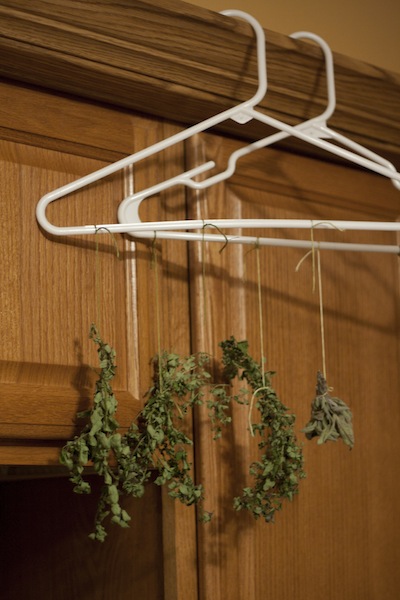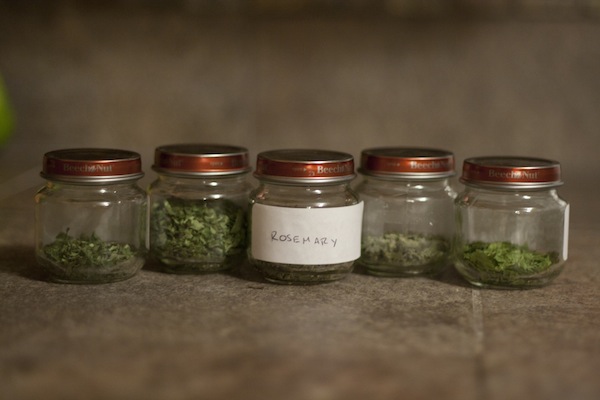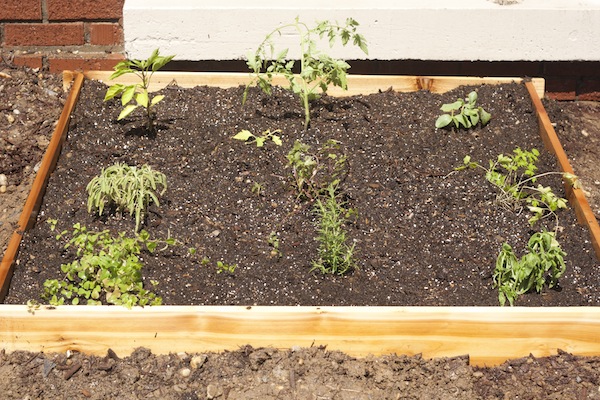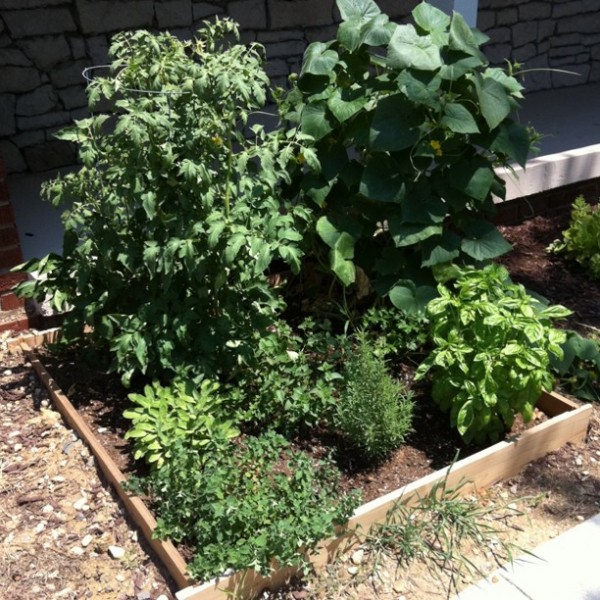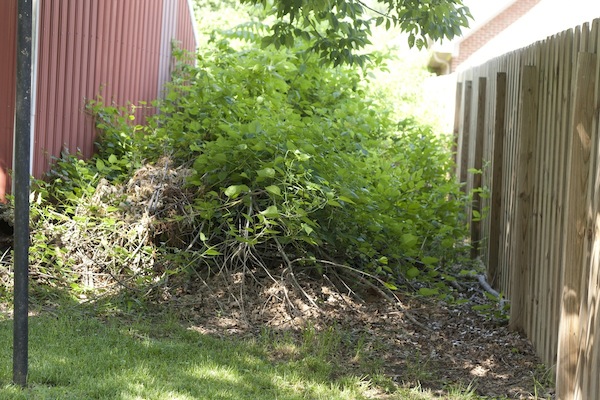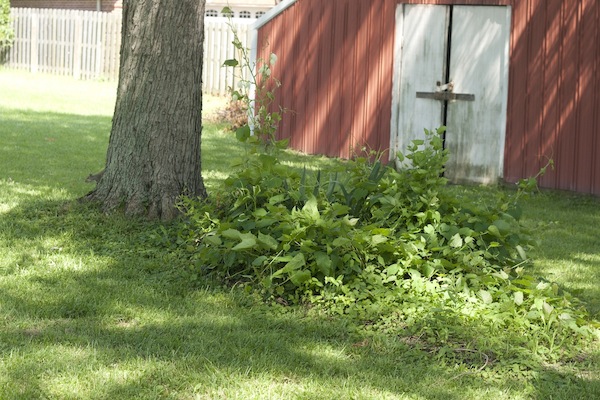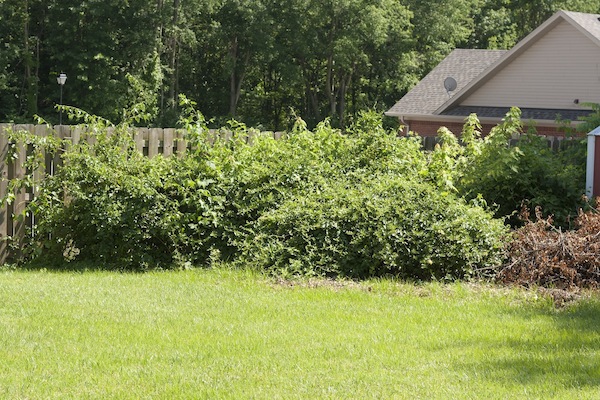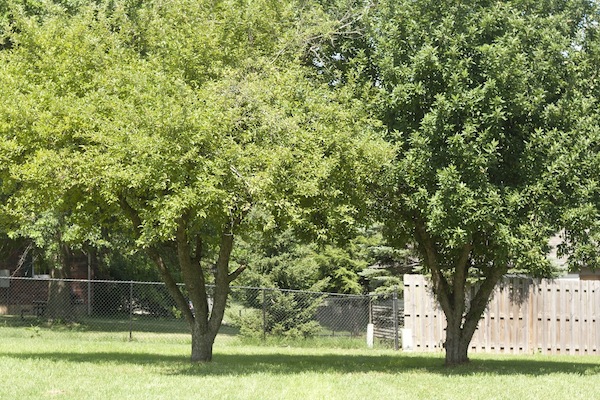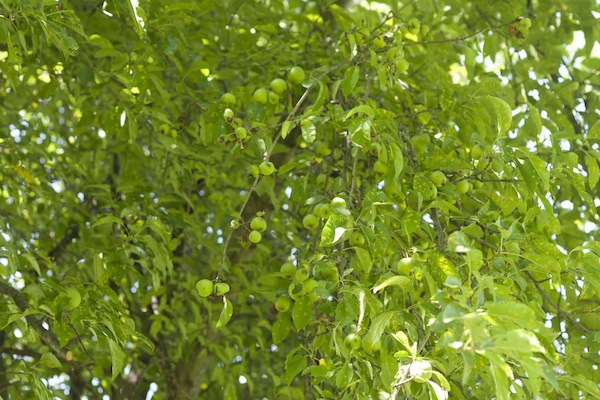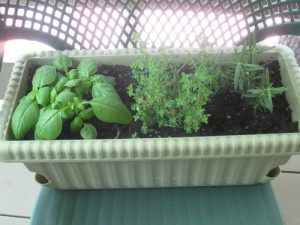My first garden was sort of hit or miss. The herbs grew beautifully, and I harvested quite a few cucumbers before the plant succumbed to wilt. The red peppers were too shaded by the gigantic tomato plant to ever do much of anything. And that tomato plant? Pfft. It grew probably about 20 GIANT tomatoes that never turned red. I think it was a combination of planting too late and putting too much into one tiny bed.
I was feeling guilty about my beautiful herbs, though, because I didn’t think I’d used enough. As the first frost neared, I wanted to try to salvage some of them for drying so I could get a little more use out of them. I was really intimidated by the idea of drying herbs myself. My favorite Food Network chef, Alton Brown, did an entire show on the practice of drying herbs, but his method was so complicated and required buying lots of equipment. I didn’t have time for that. So I decided to do it the old-fashioned way and hope for the best.
I clipped as many stems as I could from each plant. Then I bundled them up and tied them with something I had laying around — embroidery floss. It took some thinking to find a way to hang them, but I eventually tied the bundles to a couple of ordinary hangers. I hung them in a dry, dark place in my house, and I left them alone.
About two weeks later, I cut them off the strings, removed the stems, crushed them into tiny flakes, and put them into clean, dry baby food jars that I reserved specifically for this purpose. I used office labels to mark each jar. Unfortunately, my gorgeous basil plant didn’t survive long enough for me to clip any for drying, but I have rosemary, oregano, peppermint, sage, and a little bit of parsley.
It was so simple! My only regret is that I didn’t clip more stems. I thought I’d end up with too many, but once they’re dried, removed from the stems, and crushed, they take up much less space than when they’re fresh. There’s not really enough parsley to do anything but garnish a few dishes, but I have a ton of rosemary and oregano and a little sage for our holiday cooking this year.
I will most definitely be doing this again next year with my late herb harvest. These dried herbs are much cheaper and fresher than the freeze-dried jars at the grocery store, and looking at these tiny jars of fresh dried herbs makes me feel so proud of my tiny little garden.
